On seeing ghosts… (and a mystery solved)
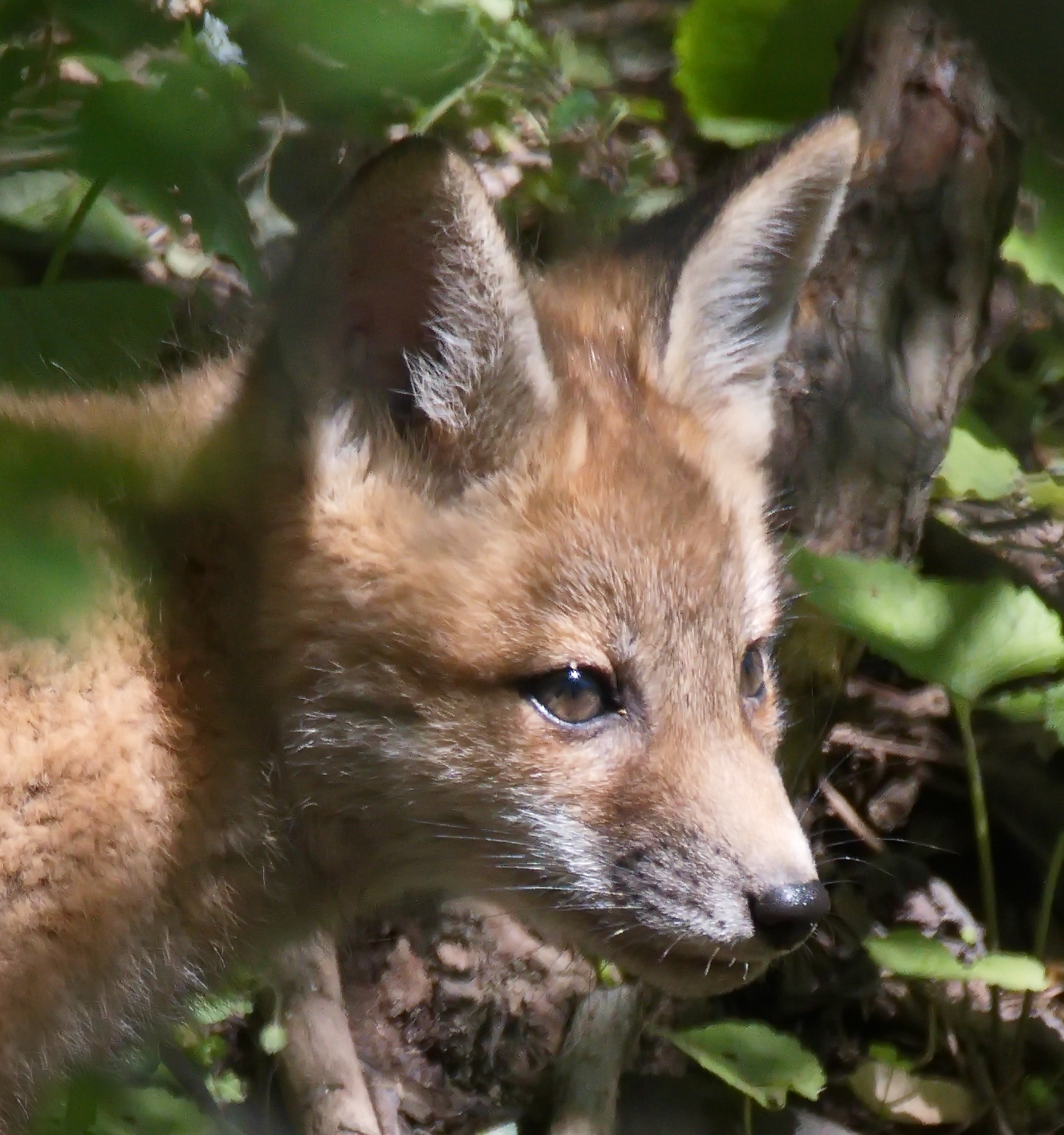
Well, my tracking mystery is no longer so mysterious! Several days ago I stopped seeing any fox sign at all near the den that I suspected was in use this year. That made me wonder if the kits/cubs had been moved to another den, which is a pretty common behavior among wild canids. I also noticed fresh digging at the den that was used in 2018 but saw no additional sign. To be honest, I was starting to become discouraged. The latest I had ever seen fox kits in these woods was May 2. I worried that the 2020 den had failed.
On Thursday, May 7th, I had hiked almost the entire woods when I saw an adult fox slip into the underbrush. I only got a quick glimpse, although it was enough to establish that it wasn’t “my” fox. Still, I was thrilled to confirm that there was (still? again?) a fox in my woods, whoever it was. I followed the direction the fox had taken to see if I could track it, and when I neared the creek I spotted a kit! There were two of them on the creek bank, but as soon as they saw me they bolted back into the underbrush. I watched them wrestle and play for about an hour, but they never came far enough out of the undergrowth for me to get an unobstructed photograph. I could see that there were at least three of them, though, and that they all looked healthy. Kits usually first exit the den when they’re four weeks old, and their eyes turn from blue to gold between four and five weeks of age. These kits already have golden eyes, so I would guess that they’re five or six weeks old.
Little stinker just wouldn’t come out far enough to let me get a good shot!
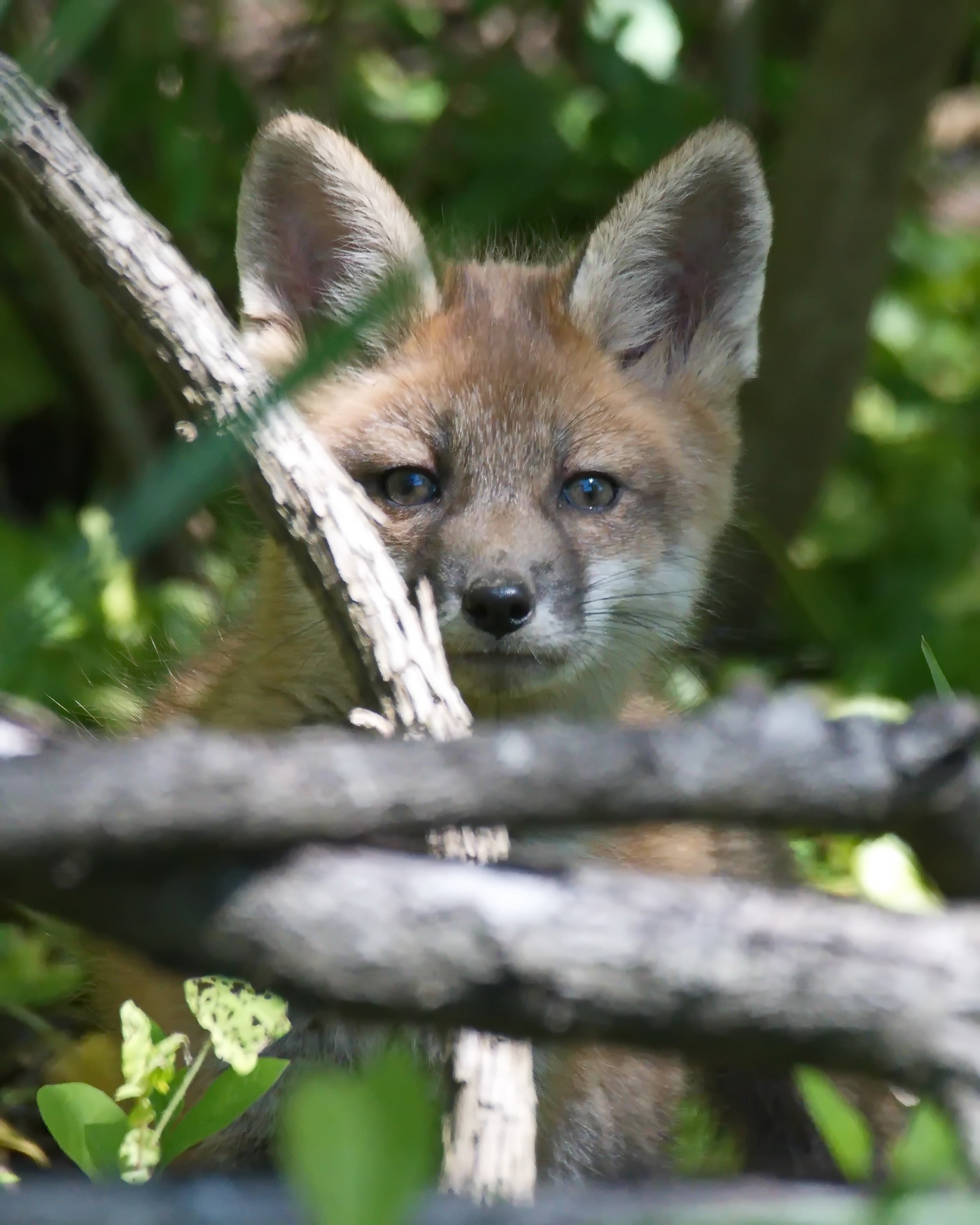
I returned to the woods first thing Friday morning, hoping that patience would allow me to get a good photo. My plan was to sit. The concept of the Sit Spot is integral to most naturalists’ practices. The idea was first developed by a naturalist named Ernest Thompson Seton, at which time it was called a Seton Spot, but the concept has been integrated into most outdoor awareness programs and naturalist training techniques, including the Kamana program, which I study. The idea is this: When a human enters the woods or another natural place, there is a wave of activity in response to her presence. Birds scatter and call alarms. Reptiles and amphibians freeze or flee. Mammals melt into the shadows. Once you become aware of this, you can’t miss it. Most of us don’t know it, though, and we create continual unrest wherever we go. We enter the woods as if we own them, hurriedly, noisily, and without regard to or even awareness of who we’ve disturbed. The idea behind the Sit Spot is that you…well, sit. Once you’ve entered the area, you sit quietly and wait for the heightened vigilance you’ve created to subside. If you are still and quiet for about 20 minutes, the birds and animals will often resume their normal activities. It’s best if you can visit your Sit Spot frequently and over a long period of time so that you can see it under a variety of conditions and throughout the seasons, but the practice of slowing down, quieting your movement, your breathing, and your mind, and moving slowly and respectfully will increase the amount of wildlife you see even on occasional walks.
I believe in the Sit Spot, and I visit sit spots regularly, but I am by nature a prowler. I like to wander, and that’s what I’ve been doing in my woods lately, looking for tracks and sign. On Friday I sat.
My original intent was to sit in my blind. I can’t hide from foxes, not really. Their sense of hearing is phenomenal, and they can hear me coming from 100 yards away. They can also smell me unless I’m downwind, and there’s almost never a way for me to arrange to be on the correct side of the light (for photography purposes) and downwind at the same time. Still, I thought the foxes might feel more comfortable if they couldn’t see my forward-facing predator eyes. The blind might have worked if I’d known exactly where to look, but since I didn’t know what den they were using, I needed a wider field of vision than I could get through the blind. So, I sat without cover beyond the tree I was sitting under.
For the first hour I saw no foxes at all, but being still allowed me to spot and photograph my first blue-grey gnatcatcher of the year. I’d heard them but hadn’t slowed down enough to see them before then. Teensy little things in constant motion!
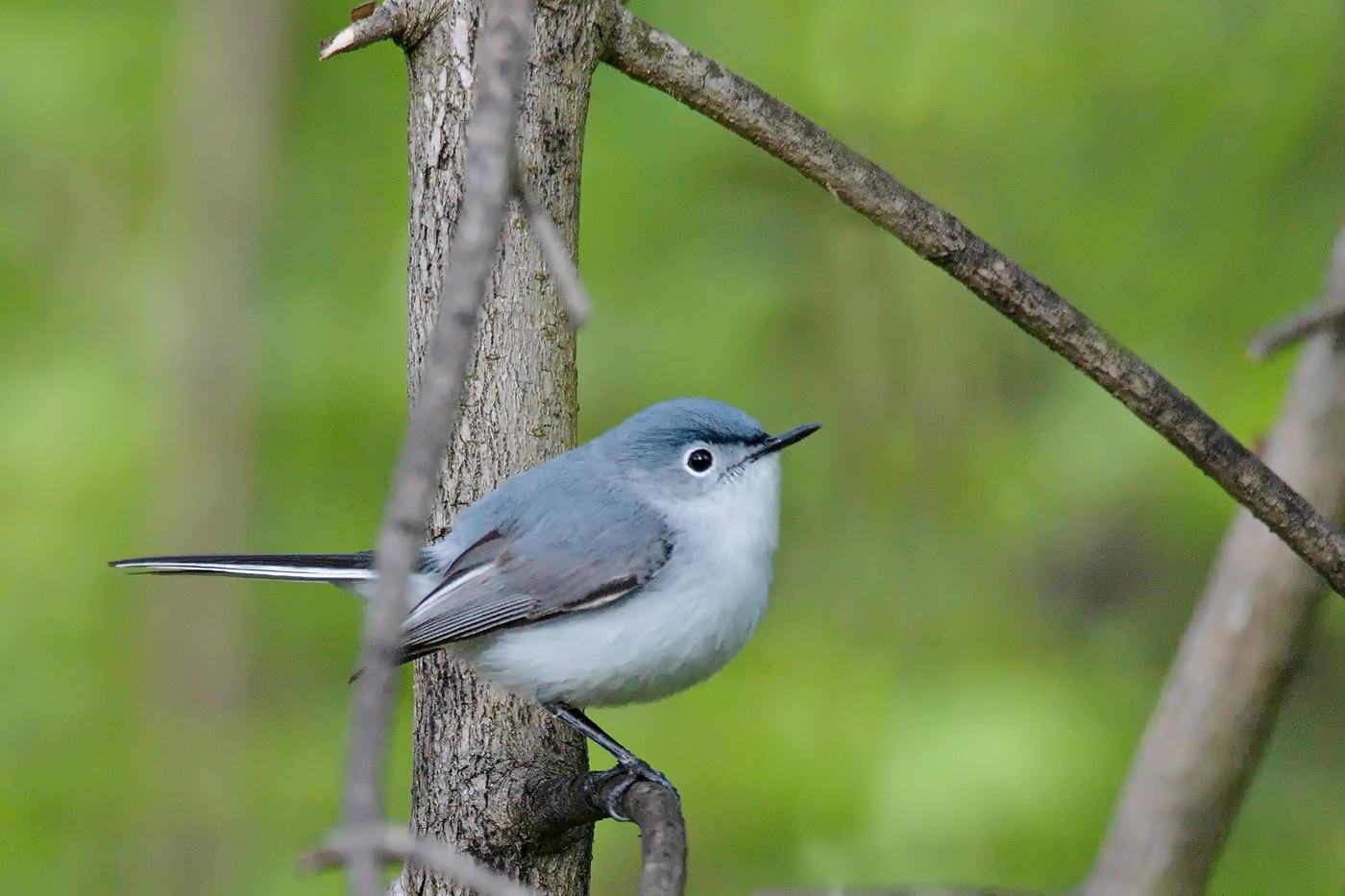
After about an hour I did see the foxes begin to move about. They once again remained in the underbrush such that I couldn’t get an unobstructed photo, but the time wasn’t wasted. If you’ve been reading, you know that I tracked a fox in these woods for over three years, and now he has most likely died. I’ve been bereft, and I’ve feared it might be affecting my tracking ability because the truth is that I very much *want* there to be a fox family in my woods…if not “my” fox, then another. When I walk in my woods these days it feels as if I’m always seeing ghosts. My heart leaps at every rustle in the grasses or flash of color that I see out of the corner of my eye. Was it a fox or just the wind? I’ve been feeling as if I can’t trust my senses because I’m too biased by desire.
But when I sat, I knew.
I could track that rustling sound to the sight of a plump bottom and bushy little tail wriggling between tree roots. I didn’t have to turn toward the flash of bronze and wonder if I’d imagined it. I’d been still, and I’d been quiet, and I knew what I saw.
I don’t know if or when I will get photos of these fox kits. I believe they may be using a den that was either recently dug or that I just haven’t noticed before because it’s too covered by branches and brambles rather than one of the dens I’ve drawn on my map. I placed a star in the general area. In the fall after the kits have dispersed I’ll get back in there and investigate, but I don’t want to disturb them while they’re still using it.
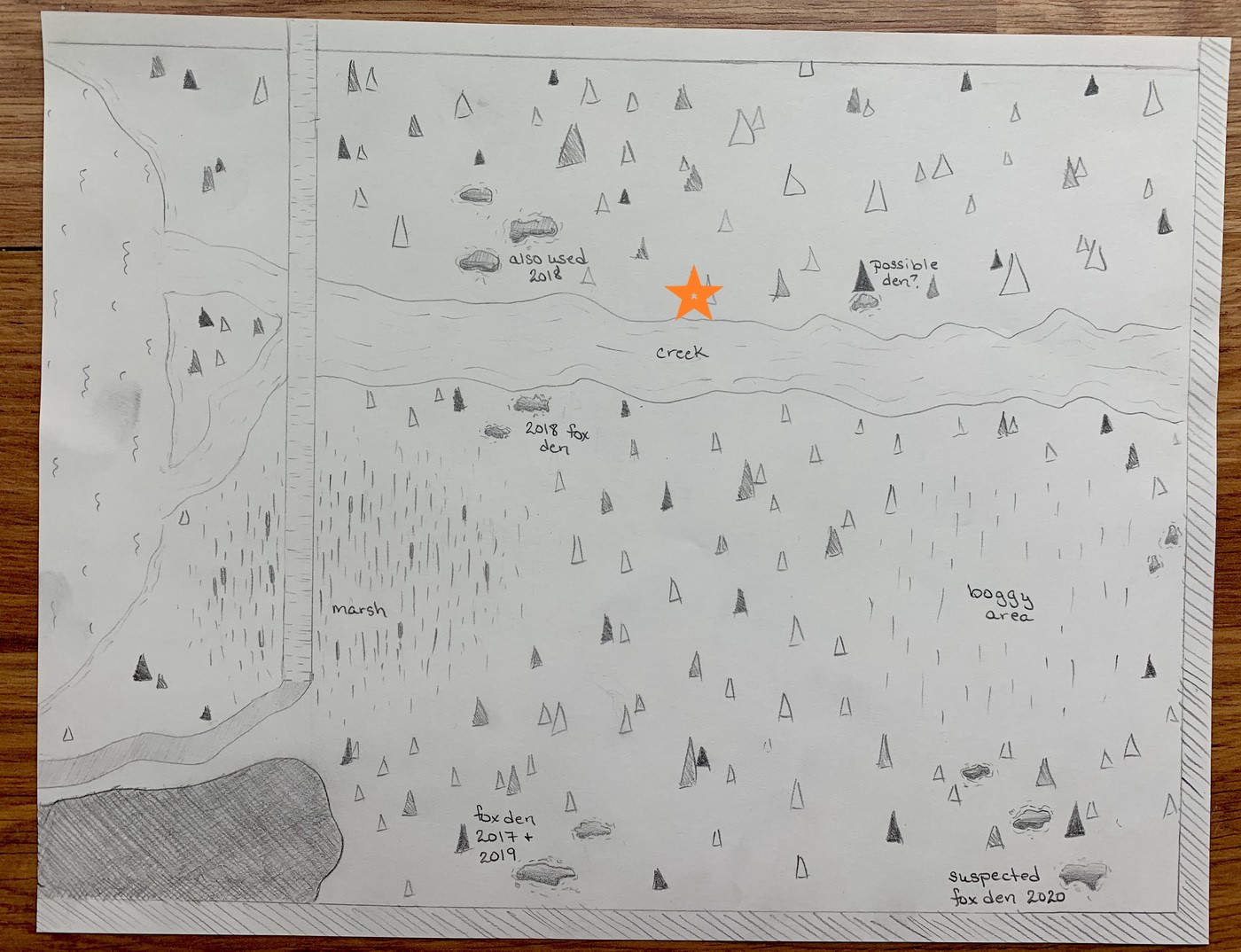
In addition to the tangled growth (probably) covering the entrance to the den, the grasses here get very high, especially in the more open areas. By July they’ll be up to my chest, and because we’ve had such a wet spring they’re up to my hips already. (Because of the morning dew my pants were wet to the waistband by the time I got to my sit spot on Friday!) Once the grasses are that high, a fox can be standing three feet from me and I still won’t see it. I’ll keep trying for at least another month or so, but we’ll just have to see how it goes.
Whether I get good photos of these foxes or not, I’m overjoyed to have found them. Foxes are good company in the woods, and I’ve missed them something fierce. The woods just don’t feel like home without them. And in a world that’s even more chaotic than usual right now, I find peace in natural cycles. Foxes den in the winter…every winter. Kits emerge from the den in the spring…every spring. Kits disperse to make lives of their own (if they survive to adulthood) in the fall…every fall. Foxes are born, and foxes die…and new foxes move into their territories…where new foxes are born and new foxes die…and so it goes.
And look who I met on my way back to my car! Apparently everyone was hiding that morning, but I enjoyed seeing this Eastern box turtle peeking out at me.
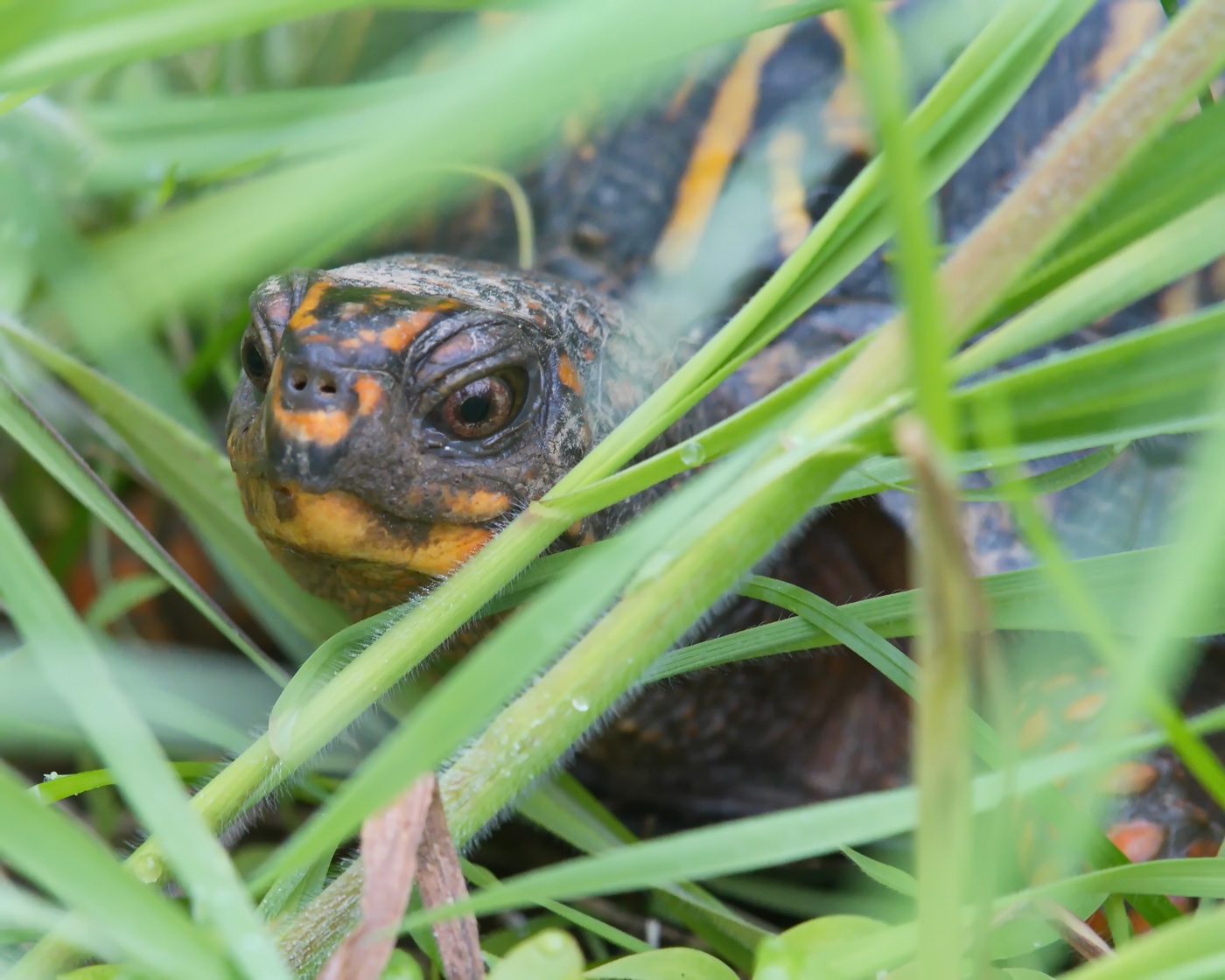
I left the woods feeling restored.
~~~~~~~~~~~~~~~~~~~~~~~
Updated to add: I have been given a tip on another fox den, and the odds that I can get some good fox kit photos there are high. Stay tuned!!

